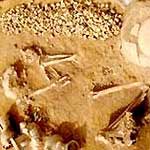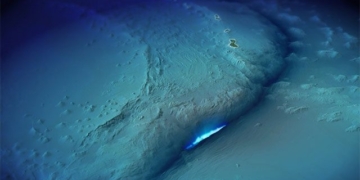 After six months of intensive work, the excavation and relocation of archaeological sites beneath the 570 elevation of the Pleikrông hydropower reservoir in Kon Tum province has been completed by the archaeological team from the Institute of Archaeology.
After six months of intensive work, the excavation and relocation of archaeological sites beneath the 570 elevation of the Pleikrông hydropower reservoir in Kon Tum province has been completed by the archaeological team from the Institute of Archaeology.
At nine excavation sites within the Pleikrông hydropower reservoir area, the team uncovered over 48,000 rich and diverse artifacts and remains. Among these finds are 127 hearths, 99 burial sites, 970 stone tools, 5 bronze items, 12 iron tools, and 68 ceramic artifacts. Each archaeological site reveals 2 to 3 cultural layers from prehistoric, protohistoric, and modern historical periods. All the remains are located along the banks of the Pôkô River, an area known for its abundant food resources and favorable agricultural conditions.
Associate Professor Dr. Nguyễn Khắc Sử, head of the Pleikrông archaeological excavation team, stated: “The most remarkable discovery during this excavation was the casting molds for bronze axes and tools, which provide evidence of bronze metallurgy in Kon Tum. This evidence was found at multiple sites, not just one. Furthermore, the bronze artifacts here closely resemble those from the Đông Sơn culture in Thanh Hóa. Additionally, we found ceramics in the burial sites that are very similar to the Sa Huỳnh culture along the central coast.”
This indicates that prehistoric inhabitants in Kon Tum had cultural exchanges with two prominent cultural centers: Đông Sơn and Sa Huỳnh. Preliminary studies suggest that the bronze artifacts date back approximately 3,000 years. These prehistoric communities left distinctive marks in the form of production tools and evidence of habitation.
According to Dr. Nguyễn Khắc Sử, the most distinctive feature compared to other cultures we have studied is the development process of late Neolithic inhabitants transitioning into the metal age. This reflects a society stepping into the threshold of civilization, characterized by agricultural rice production, metallurgy, bronze casting, and communal living among distinct tribes that maintained close-knit, community-oriented relationships.
The substantial volume of artifacts and remains discovered this time will serve as an invaluable resource for researchers, allowing them to reconstruct the prehistoric cultural landscape of Kon Tum in particular and the Central Highlands in general.


















































